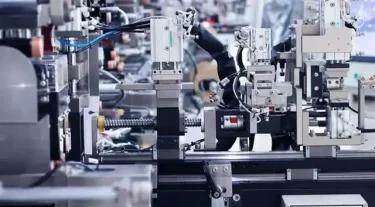
# Tape Production Process and Techniques
## Introduction to Tape Manufacturing
Tape manufacturing is a complex process that involves multiple stages to create adhesive products for various applications. From packaging tapes to medical adhesives, the production techniques have evolved significantly to meet diverse industry needs.
## Raw Material Selection
The foundation of quality tape production lies in careful raw material selection:
– Backing materials (paper, plastic films, or cloth)
– Adhesive compounds (rubber-based, acrylic, or silicone)
– Release liners (for pressure-sensitive tapes)
– Additives (tackifiers, stabilizers, and plasticizers)
## The Tape Production Process
### 1. Backing Material Preparation
The process begins with preparing the backing material. For plastic films, this involves extrusion or calendaring to achieve the desired thickness and properties. Paper backings undergo special treatments to enhance strength and moisture resistance.
### 2. Adhesive Application
There are several methods for applying adhesives:
– Solution coating: Adhesive dissolved in solvent and coated onto backing
– Hot melt coating: Molten adhesive applied directly
– Water-based coating: Environmentally friendly alternative to solvent-based
### 3. Drying and Curing
After application, the adhesive must be properly dried or cured:
– Solvent-based adhesives require evaporation chambers
– Water-based systems need controlled drying temperatures
– UV or electron beam curing for certain specialty adhesives
### 4. Lamination (if applicable)
Some tapes require additional layers:
– Release liners for pressure-sensitive products
– Protective coatings for surface durability
– Printed layers for branding or identification
## Quality Control Measures
Stringent quality checks ensure consistent tape performance:
– Adhesion strength testing
– Tensile strength measurements
– Thickness uniformity checks
– Temperature resistance evaluations
## Advanced Manufacturing Techniques
Modern tape production incorporates innovative methods:
### Nanotechnology Applications
– Nano-enhanced adhesives for superior bonding
– Thin-film coatings for specialized applications
### Eco-Friendly Production
– Water-based adhesive systems
– Recyclable backing materials
– Energy-efficient drying processes
## Specialized Tape Varieties
Manufacturing techniques vary for different tape types:
### Double-Sided Tapes
Require precise adhesive application on both sides with intermediate release layers during production.
### Electrical Tapes
Incorporate special dielectric properties and flame-retardant additives.
### Medical Tapes
Produced in cleanroom environments with biocompatible adhesives.
## Future Trends in Tape Manufacturing
The industry continues to evolve with:
– Smart adhesives with sensing capabilities
– Biodegradable tape solutions
– Automated production with AI quality control
– Customizable adhesive properties for specific applications
The tape manufacturing process combines material science with precision engineering to create products that serve countless industries. As technology advances, production techniques will continue to improve, offering tapes with enhanced performance and environmental sustainability.
Keyword: tape manufacturing